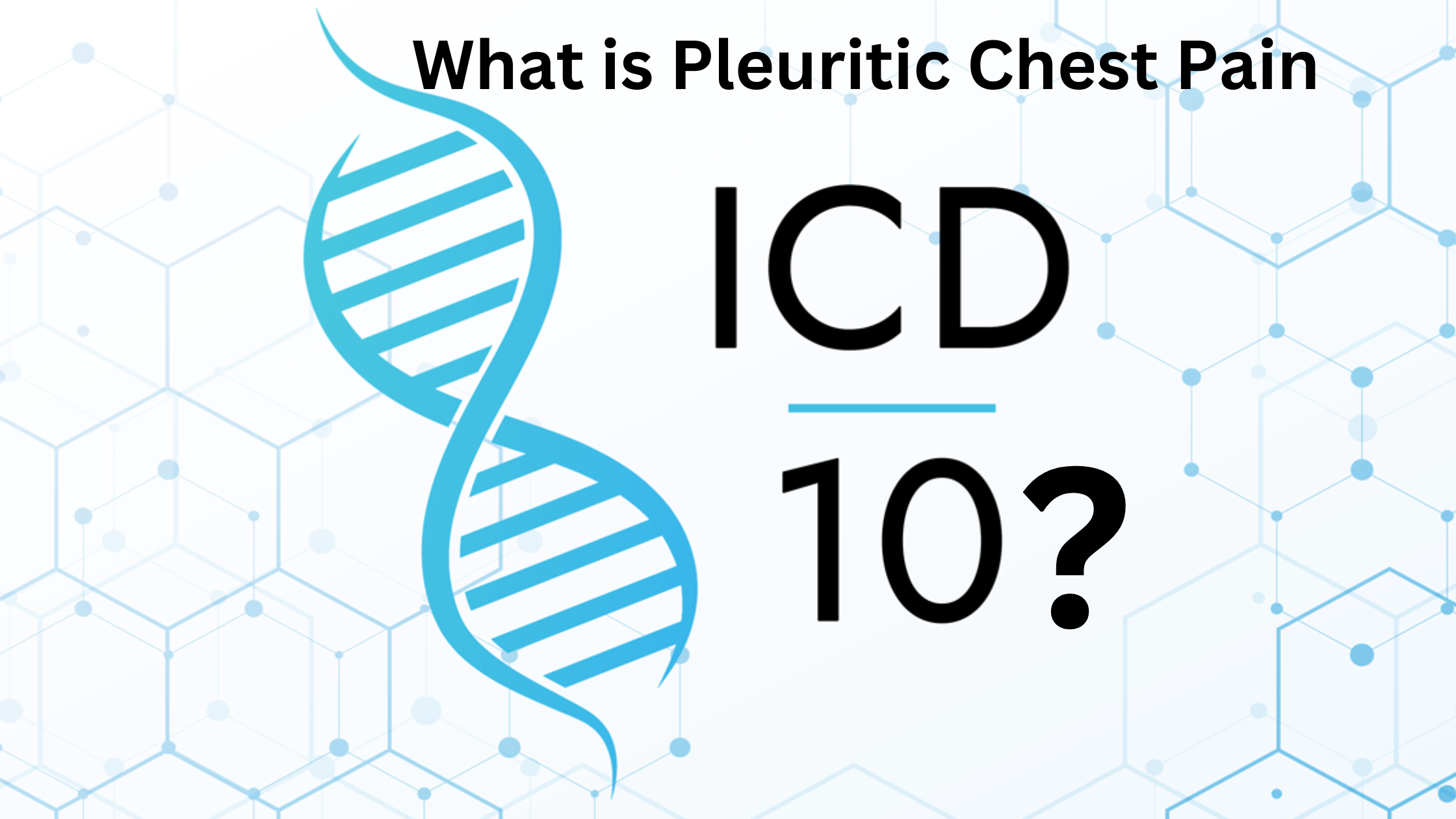Last updated on June 29th, 2025 at 02:53 pm

Pleuritic chest pain ICD-10 is R07.1. This discussion will further include symptoms, causes, diagnosis, and treatment. Learn how to identify and manage this condition effectively, including how to code related diagnoses like pleurisy ICD-10, pleuritic pain ICD 10, and pleuritis ICD 10.
Pleuritic chest pain, often referred to as pleurisy, is a sharp, stabbing pain in the chest that typically worsens with breathing, coughing, or sneezing. This condition can be alarming and is commonly associated with various underlying medical issues, ranging from infections to chronic diseases. In the medical coding system, pleuritic chest pain is categorized under the ICD-10 (International Classification of Diseases, 10th Revision) code R07.1. Understanding pleuritic chest pain ICD-10 classification is crucial for healthcare providers, coders, and patients alike for accurate diagnosis, treatment, and billing purposes.
Pleuritic Chest Pain: What You Must Know!
Pleuritic chest pain arises from the inflammation of the pleura, the double-layered membrane surrounding the lungs and lining the chest cavity. The pleura consists of two layers: the visceral pleura, which covers the lungs, and the parietal pleura, which lines the chest wall. When inflamed — a condition known as pleuritis ICD 10 or pleurisy ICD-10 — this smooth gliding motion is disrupted, causing intense, sharp pain often documented as pleuritic cp ICD 10.
Symptoms of Pleuritic Chest Pain
Pleuritic chest pain is characterized by several distinct symptoms:
-
Sharp, Stabbing Pain: Typically localized to one side of the chest and intensifies with deep breathing, coughing, or sneezing — a classic presentation coded as pleuritic chest pain ICD 10 code.
-
Shortness of Breath
-
Coughing
-
Radiating Pain
-
Fever and Chills (in cases of infectious pleurisy ICD 10 code)
Causes of Pleuritic Chest Pain
Common causes include:
-
Pulmonary Embolism (PE): A serious cause often listed under acute pleuritic chest pain presentations.
-
Myocardial Infarction (MI)
-
Pericarditis
-
Aortic Dissection
-
Pneumonia and Pneumothorax: Potential causes of pleuritic chest pain ICD-10 and chest pain on breathing ICD 10.
-
Viral Infections
-
Pleurisy ICD
Diagnosing Pleuritic Chest Pain
Accurate diagnosis involves history, exam, and tests to determine the presence of pleuritic pain ICD 10, pleurisy ICD 10, or pleuritis ICD 10.
Diagnostic Tools:
-
Chest X-ray
-
CT Scan
-
Ultrasound
-
Blood Tests
-
Electrocardiogram (ECG)
-
Pleural Fluid Analysis
ICD-10 Coding for Pleuritic Chest Pain
The ICD-10 code for pleuritic chest pain is R07.1. It falls under “Symptoms and signs involving the circulatory and respiratory systems” (R00-R09). Related codes include:
-
ICD 10 pleuritic chest pain
-
Pleuritic chest pain ICD10
-
ICD-10 code for pleuritic chest pain
-
Chest pain pleuritic ICD 10
-
Pleuritic chest painicd 10
-
ICD 10 code pleuritic chest pain
-
Left-sided pleuritic chest pain ICD 10
-
Right sided pleuritic chest pain ICD 10
The code also aligns with lung pain ICD 10 when pleural involvement causes discomfort.
Importance of Accurate ICD-10 Coding
Accurate coding for pleuritic chest pain ICD-10 ensures:
-
Correct diagnosis of conditions like pleuritis ICD 10 code, pleurisy ICD-10, and acute pleuritic chest pain.
-
Insurance reimbursements
-
Comprehensive medical records
Treatment for Pleuritic Chest Pain
Management includes:
-
Pain Management: NSAIDs, analgesics, opioids
-
Treating Underlying Causes: Antibiotics, antivirals, anticoagulants, thoracentesis for effusion
-
Lifestyle Remedies
All interventions target resolving symptoms like pain with inspiration ICD and preventing complications from pleurisy ICD.
Complications of Pleuritic Chest Pain
Untreated pleuritic chest pain can lead to:
-
Pleural Effusion
-
Empyema
-
Lung Scarring
-
Sepsis
Which may be coded under pleuritic cp ICD 10, pleuritic chest pain ICD 10, and related ICD-10 pleurisy codes.
Prevention of Pleuritic Chest Pain
Key measures include:
-
Vaccination
-
Healthy habits
-
Prompt treatment of respiratory issues that might cause pleurisy ICD 10 or pleuritis ICD 10 symptoms.
Glossary Index:
-
Pleuritic chest pain ICD 10 — R07.1
-
ICD-10 code for pleuritic chest pain — R07.1
-
Pleuritic pain ICD 10 — R07.1
-
ICD 10 pleurisy — R09.1
-
Pleurisy ICD-10 — R09.1
-
Pleuritis ICD 10 code — R09.1
-
ICD 10 code for acute pleuritis — R09.1
-
Chest pain on breathing ICD 10 — R07.1
-
Left-sided pleuritic chest pain ICD 10 — R07.1
-
Right sided pleuritic chest pain ICD 10 — R07.1
-
Lung pain ICD 10 — R07.1
-
Pain with inspiration ICD — R07.1
Discover more about accurate coding and health management at Medical Antidote.




